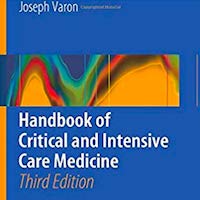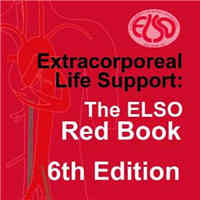Tag: treatment
Survival Benefit of a Low Ratio of Visceral to Subcutaneous Adipose Tissue Depends on LDL Clearance vs. Production in Sepsis
Patients with sepsis with a high ratio of visceral adipose tissue (VAT) to subcutaneous adipose tissue (SAT) have increased mortality. Our goal was to investigate the mechanism of this effect, noting that low LDL levels are... read more
Outcomes in Patients with Vasodilatory Shock and RRT Treated with Intravenous Angiotensin II
Acute kidney injury (AKI) requiring renal replacement therapy in severe vasodilatory shock is associated with an unfavorable prognosis. Angiotensin II treatment may help these patients by potentially restoring renal function... read more
Critical Burn Patients in the ED/ICU
Dr. Djogovic completed training in Emergency Medicine and Critical Care Medicine from 1999-2005, and is currently employed at the University of Alberta Hospital as an Emergency Physician, and as an Intensivist in the General... read more
Decision-making in the detection and management of patients with sepsis in resource-limited settings
We read with interest the study by Andrews et al. and the related correspondence from Shrestha et al. We share the concern that clinical examination (and observations) appear(s) to be perceived as relatively unimportant in... read more
Evidence-based Recommendations on the Use of Intravenous Lipid Emulsion Therapy in Poisoning
Although intravenous lipid emulsion (ILE) was first used to treat life-threatening local anesthetic (LA) toxicity, its use has expanded to include both non-local anesthetic (non-LA) poisoning and less severe manifestations... read more
Association Between Continuous Hyperosmolar Therapy and Survival in Patients with TBI
Intracranial hypertension (ICH) is a major cause of death after traumatic brain injury (TBI). Continuous hyperosmolar therapy (CHT) has been proposed for the treatment of ICH, but its effectiveness is controversial. We compared... read more
Critical Care Pharmacists and Medication Management in an ICU Recovery Center
Many patients experience complications following critical illness; these are now widely referred to as post-intensive care syndrome (PICS). An interprofessional intensive care unit (ICU) recovery center (ICU-RC), also known... read more
Should doctors be required to inform patients of their palliative care rights?
I overheard a colleague admit an 84-year-old woman to the hospital from the emergency department for a sizable mass in her uterus — no doubt, cancerous. I pictured a frail woman who’d been suffering for a while and was... read more
Are We Using IV Bags Properly?
In the months since Hurricane Maria, my hospital has dealt with an IV bag shortage. It turns out that might not be such a bad thing. Among the collateral damage of Hurricane Maria’s havoc on Puerto Rico is the shutdown... read more
Finding the Best Strategy to Improve Weaning Outcomes
Respiratory muscle dysfunction, being a common cause of weaning failure, is strongly associated with prolonged mechanical ventilation (MV) and prolonged stay in intensive care units. Strategies to improve weaning outcomes... read more
Decision-making on withholding or withdrawing life-support in the ICU
Many critically ill patients who die will do so after a decision has been made to withhold/withdraw life-sustaining therapy. Our objective was to document the characteristics of intensive care unit (ICU) patients with a decision... read more
Cardiac Output Monitoring: Throw it Out… or Keep it?
In critical care units, the shelf for cardiac output (CO) monitoring devices fills up with ever more innovative systems. Are these techniques useful, or are they expensive and irrelevant gadgets? There are arguments to defend... read more
REPROVE: Ceftazidime-avibactam Noninferior to Meropenem for Nosocomial Pneumonia
Ceftazidime-avibactam was noninferior to meropenem for nosocomial pneumonia including ventilator-associated pneumonia (VAP) from gram-negative organisms, results from the REPROVE trial demonstrated. Nosocomial or hospital-acquired... read more
Sepsis Incidence: A Population-Based Study
The incidence of sepsis with organ dysfunction is higher than most previous estimates independent of definition. The inclusion of all inpatients started on intravenous antibiotic treatment of sepsis in a population makes... read more
FDA Approves Treatment of Patients with Hospital-Acquired Bacterial Pneumonia and Ventilator-Associated Bacterial Pneumonia
FDA has approved Allergan's supplemental New Drug Application (sNDA) to expand the approved use of AVYCAZ® (ceftazidime and avibactam) to include the treatment of hospital-acquired bacterial pneumonia and ventilator-associated... read more
Oral Versus Intravenous Antibiotics for the Treatment Of Bone and Joint Infection
Oral antibiotic therapy is non-inferior to IV therapy when used during the first six weeks in the treatment for bone and joint infection, as assessed by definitive treatment failure within one year of randomisation. These... read more
Prevalence of Pulmonary Embolism in Patients With Syncope
The results of the present study confirm that pulmonary embolism (PE) is rarely identified in patients presenting to the ED with syncope. Although PE should be considered as a differential diagnosis in every patient, not... read more
Prompt Administration of Antibiotics and Fluids in the Treatment of Sepsis
We conclude that antibiotic therapy is highly time sensitive, and efforts should be made to deliver this critical therapy as early as possible in sepsis, perhaps extending into the first point of medical contact outside the... read more
Advanced Hemodynamic and Cardiopulmonary Ultrasound for Critically Ill Patients
Focused echocardiography, advanced hemodynamic, and cardiopulmonary point-of-care ultrasound studies provide time-sensitive evaluation of critically ill patients, guiding and facilitating earlier implementation of life-preserving... read more
Managing Sepsis and Septic Shock Current Guidelines and Definitions
While sepsis defies simple definition, it's generally understood to be a clinical syndrome caused by infection that may have profound adverse physiologic consequences. Although its precise incidence is unknown, sepsis is... read more
Factors Associated with Life-Sustaining Treatment Restriction in the ICU
Few previous studies have investigated associations between clinical variables available after 24 hours in the ICU and decisions to restrict life-sustaining treatment. The aim of this study was to identify factors associated... read more
Enabling Machine Learning in Critical Care
Critical care units are home to some of the most sophisticated patient technology within hospitals. In parallel, the field of machine learning is advancing rapidly and increasingly touching our lives. To facilitate the adoption... read more









